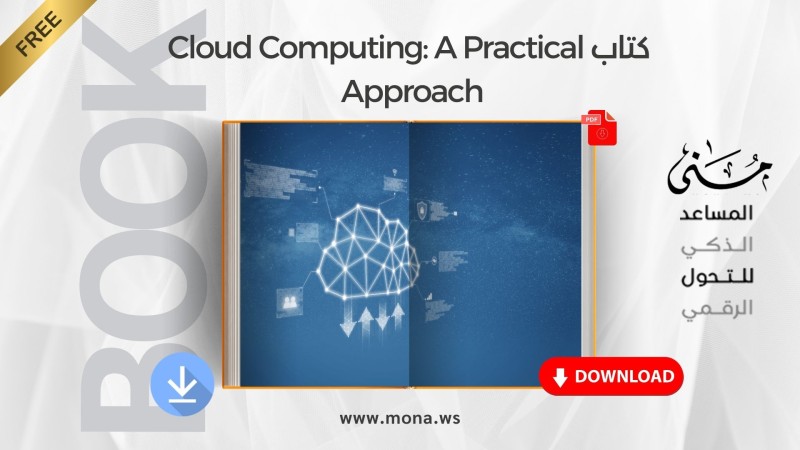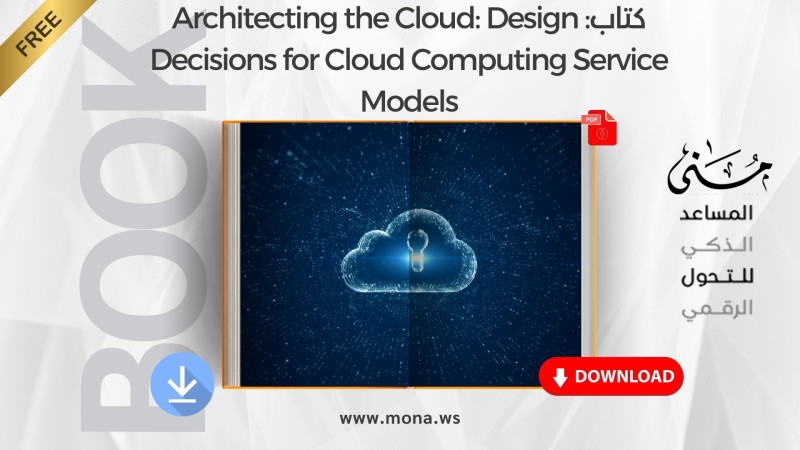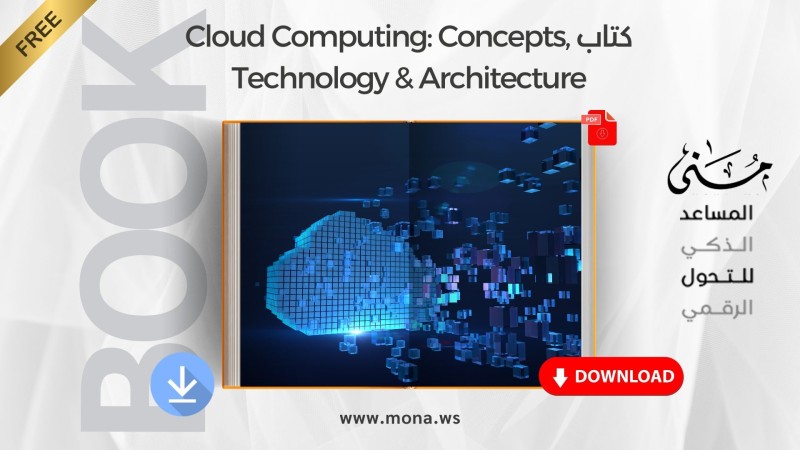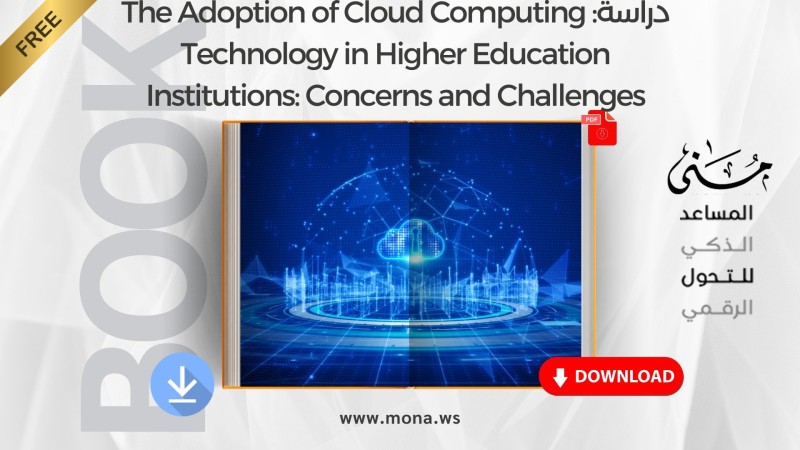Study: Developing an e-learning system based on some cloud computing applications to develop innovative thinking and the trend towards software that works as services.
Author: Dr. Marwa Zaki Tawfik Zaki - Ain Shams University - Faculty of Education
The book "Developing an E-Learning System Based on Cloud Computing Applications to Develop Innovative Thinking and Move Towards Software as a Service" is an important reference in linking modern computing technologies to educational needs. The digital age requires fundamental changes, and the importance of developing an e-Learning system based on cloud computing applications to develop innovative thinking and move towards software as a service in preparing effective and flexible learners can no longer be ignored.
Study objectives and main research question
The research is based on a basic question about the effectiveness of developing an e-learning system based on some cloud computing applications to develop innovative thinking and the trend towards programs that work as services in improving innovative thinking skills and modifying trends towards service tools (SaaS), and the study focuses on the use of these applications with female education students at King Abdulaziz University.
Experimental approach and use of cloud computing
The study adopted a quasi-experimental approach, dividing the sample into two groups: an experimental group that underwent an experiment to develop an e-learning system based on some cloud computing tools to foster innovative thinking and a tendency toward software as a service, and a control group that used the internet in a traditional way. Comparison between the two groups demonstrated the importance of integrating cloud computing into education.
The role of cloud computing in supporting the educational environment
The book shows how developing an e-learning system based on some cloud computing applications to develop innovative thinking and the trend towards software that works as a service allows the use of tools such asGoogle Docs and SkyDrive facilitate collaboration among learners and enhance access to content from any device, anytime.
The results showed that developing an e-learning system based on cloud computing applications to foster innovative thinking and the adoption of software as a service contributed to raising students' scores on innovative thinking tests, confirming that the cloud environment stimulates fluency, flexibility, and originality in thinking.
Developing a trend towards software that functions as services
In addition to influencing thinking, the development of an e-learning system based on some cloud computing applications to develop innovative thinking and the trend towards programs that work as services helped modify students’ attitudes towards modern technology. Students no longer look atSaaS is not just a complex tool, but an effective and facilitating aid to the learning process.
Technological advantages of the proposed model
The proposed model for developing an e-learning system based on some cloud computing applications to develop innovative thinking and the trend towards software that works as a service provides possibilities such as multi-use, low cost, and easy access, all of which make education more adaptable to the needs of the modern era.
The impact of integration between cloud computing applications and modern educational strategies
The book indicates that the integration of cloud computing applications with modern educational strategies represents a qualitative shift in the design of digital educational environments, as it allows for the provision of rich, interactive content that addresses individual differences among learners. The study results showed that integrating cloud computing applications with strategies based on active and collaborative learning enhanced students' ability to generate innovative ideas and work more effectively within teams.
The book also demonstrates that cloud computing applications are not only used as tools for exchanging files or making instantaneous edits, but are also employed as a pivotal component in designing an integrated learning experience based on continuous interaction and the exchange of knowledge and expertise.
Data analysis and interpretation of research results
The book delves into the analysis of research findings using precise statistical tools that demonstrate the fundamental differences between the performance of the experimental and control groups. The results demonstrated a clear superiority for the group that used the cloud-based electronic system, demonstrating the effectiveness of the proposed model in developing indicators of innovative thinking such as intellectual fluency, flexibility in solutions, and the ability to generate unconventional ideas.
The study also found that this model not only impacted cognitive aspects, but also brought about a shift in psychological and behavioral attitudes toward technology use, which underscores the importance of integrating the emotional dimension into educational design components.
Future prospects for employing cloud computing in education
The book concludes with a vision for the future development of digital education based on cloud infrastructure. It proposes expanding the use of this type of system to include various educational levels, from school to university, while integrating artificial intelligence and adaptive learning to increase the effectiveness of the content.
The researcher also emphasizes the need to support educational institutions with policies and legislation that ensure cybersecurity and data protection, which contributes to building greater user confidence and improving the efficiency of the system as a whole.
Theoretical basis and motivation
The development of an e-learning system based on cloud computing applications to foster innovative thinking and the trend toward software as a service was based on theories such as constructivism and motivation theory, which encourage interaction, collaboration, and self-directed learning, making the cloud an ideal environment for fostering creativity.
Challenges and limitations
Despite the many benefits, the authors acknowledge that developing an e-learning system based on cloud computing applications to foster innovative thinking and the shift toward software as a service faces challenges such as poor internet connectivity and data security concerns. However, these obstacles do not diminish its feasibility.
Final recommendations
The researcher recommends developing an e-learning system based on cloud computing applications to foster innovative thinking and a broader shift toward software that functions as a service, particularly in educational settings seeking to reduce costs and enhance educational quality. Teachers and learners should be trained to use the system effectively.
You can download the study on developing an e-learning system based on cloud computing applications to foster innovative thinking and move towards software as a service directly from here.
 يمكنك تحميل دراسة تطوير نظام تعليم إلكتروني قائم على بعض تطبيقات السحب الحاسوبية لتنمية التفكير الابتكاري والاتجاه نحو البرامج التي تعمل كخدمات مباشرةً من هنا.
يمكنك تحميل دراسة تطوير نظام تعليم إلكتروني قائم على بعض تطبيقات السحب الحاسوبية لتنمية التفكير الابتكاري والاتجاه نحو البرامج التي تعمل كخدمات مباشرةً من هنا.









Comments
Add New Comment